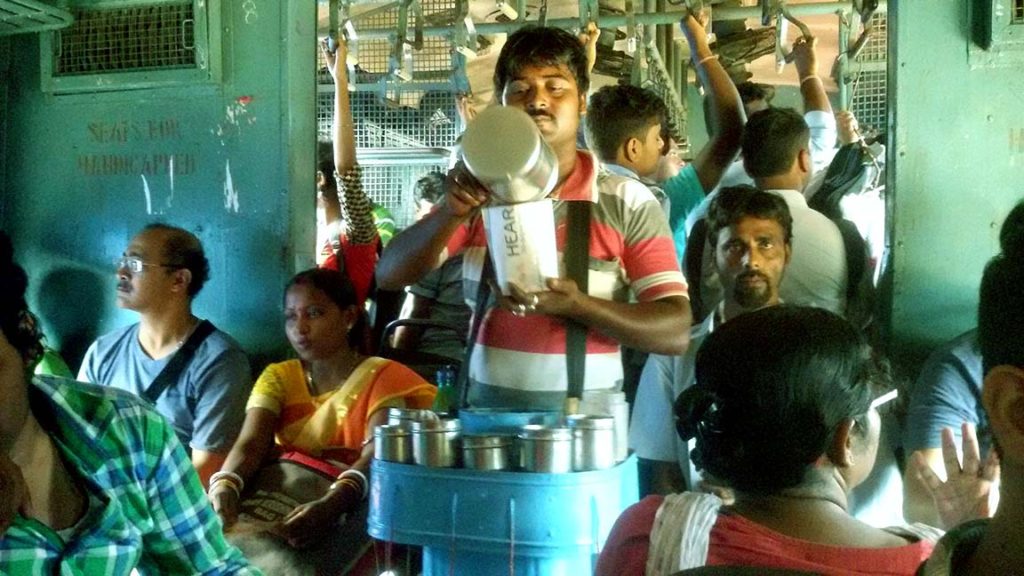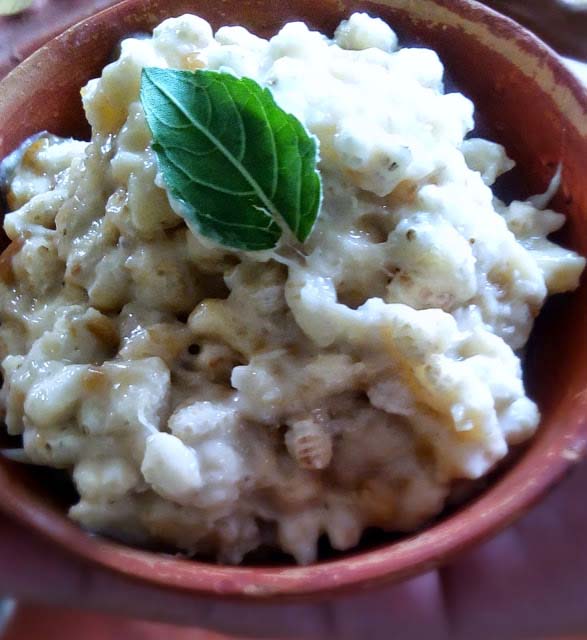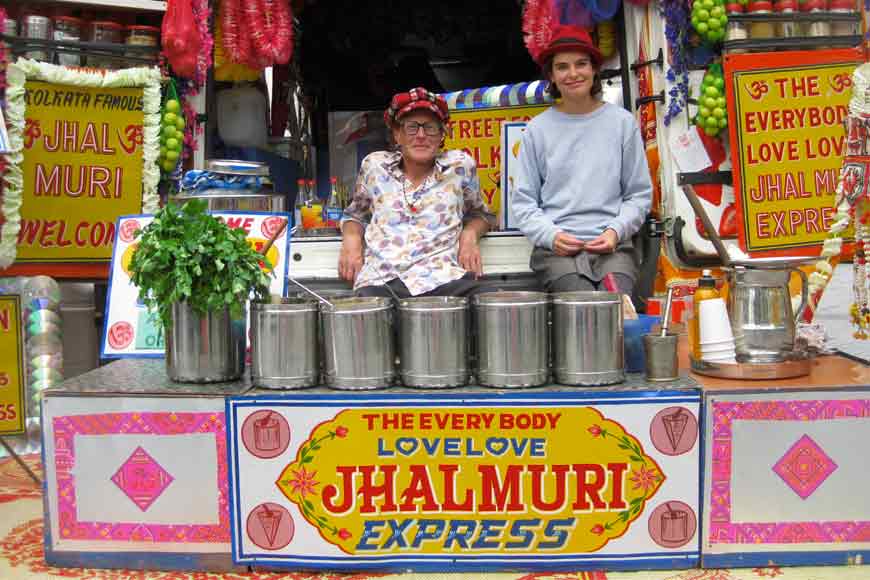“Jhal muri…Bhel puri…” A prelude
Food is always a good idea to think about. To quote Rabindranath Tagore – “sab bashonar sera basa rasonay”, the desire resides best in taste. It is also interesting to delineate a story on food. My story today is on a simple, omnipresent, barrier-breaker, a little subaltern but still a dominating cereal called muri, the puffed rice.
Puffed rice, a delightful mix of science and nature, has always been a popular food for the cultural omnivores around the world. Muri – mudi – murmura – kurmura – murmuralu – pori – puffed rice /perched rice – we may call it with whatever name, the actual factor is the crunch. It is local, desi, and most importantly pocket-friendly. Although food has always been an important part of the quintessential culture of Bengal and its everyday phenomenology, muri could only attain a semi-special status in the food basket. A queer taste, what muri offers, is often an acquired one and the high preference for it in the pan Bengal represents a sociological choice comprising culture, ethnic identity-based sentiment, class consciousness, and prolonged historicity, having references in some ancient literature of Bengal.
As Levis Strauss (1966), the famous anthropologist pointed out that “cooking is a language, through which society unconsciously reveals its structure”, one can find it through the preparations of muri based dishes of Bengal revealing the intrinsic identity of jhal muri as a cheap, quick to eat elementary food of the rural population. Owing to its high demand as an integral part of consumption pattern, especially in every rural household of Bengal, making of jhal muri has turned out to be a household enterprise and often an own account enterprise as a source of income by selling marketable surplus. But the popularity of muri is not restricted to the rural sector only. This rural household food enterprise has captured the urban and commercial market, leading to “menu-pluralism” (Beardsworth and Keil, 1992) in urban food platters of urban India. However, even though puffed rice is consumed by almost the majority of states in India in their own regional avatars, its consumption rate is highest in the state of West Bengal. The 68th round of household data of NSSO, published by the Government of India reveals that all Indian urban per capita household consumption of muri is on an average 58 gms per 30 days, costing Rs. 1.97, whereas all India rural consumption is 71 gm per 30 days costing Rs 2.32. In West Bengal, the same per capita household consumption in an urban area is 463 gm per 30 days with the cost of total consumption as Rs 14.63, and for the rural areas; it is 539 gm per 30 days costing Rs. 16.56. So West Bengal, among other States, shows a higher preference for muri.
In the urban context, distinction between elite food and peasant food ( Jack Goody’s , 1982), is visibly apparent in the consumption style and attitude towards muri. According to Pierre Bourdieu (1984), this type of class distinction based on eating habits has been socially reproduced through history and has influenced the foodways around a certain ‘taste and preference’. This is a popular aam admi’s choice, so called food of masses, but never elite. Muri, in spite of very high consumption and a natural choice as a filling food, is still considered as a subaltern snack whereas luchi and parantha (deep-fried flatbread, made of Maida flour), are considered as elite, with still new entrant oats but never muri.
It is for masses and therefore, carries a political tag. A leader prefers chewing muri on camera than savouring luchi. Eating muri, can be seen as a symbolic gesture of empowerment of the subaltern. Muri, especially in West Bengal, is both a sentiment and a tool of political identity formation. In political party offices of West Bengal, irrespective of party flags, the common snack for the party members is mostly muri.
Naturally, a few questions crop up: (i) why muri, with varied types of commercialization and globalization, could not catch the whims and fancies of the Bhadrolok, gentleman class-upper class of West Bengal? To be more specific, why muri is generally never thought of as a good
food which can be served to a guest in a Bengali Bhadrolok household, (ii) Why does Muri become an equalizer in political society irrespective of ideological differences? Rather, why does it convey a pro-poor & pro-people choice? and (iii) Why some of the globalised regional native foods like muri, fail to bridge the class difference in their own native geographical homelands.
But before that….
Genealogy of Puffed rice: A quick look!
Puffed rice has a geographical imprint on almost all countries across the globe and especially on the South Asian subcontinent. Historically, the taste for puffed rice was acquired only after the invention of the technique of ‘puffing’ either by a puff gun or by an indigenous technique called hot sand frying. The popularity of puffed cereal whether rice or wheat gained much popularity after the success of popcorn. Puffed grains are used either as a breakfast cereal or as a casual snack. Worldwide, the various renditions of puffed grains are sold as street foods. For an instance, in China and Korea, they are known as “ ppeong twigi” and in Japan they are called “ pon gashi”. Food items like Corn puff, sugar puff, Golden Crisp are some of the western varieties.
Peculiarity in Indian context

In India, however, the fun food story becomes a little serious. Arjun Appadurai once mentioned with his usual flamboyance that “South Asian social thought appears to view persons as complex, unstable and weakly bonded aggregates of bio moral substance. They are therefore constantly prone to moral and physiological transformation in transacting with other persons……In this unstable biomoral cosmos, food, along with blood and semen is a particularly powerful medium of contact between persons and groups. ”
A society that perceives food to be a vital medium of contact between two persons, automatically gives it a larger semiotic role. As sociologist Khare (1976) mentioned food to be the Indian cosmological link between god and mortals, he highlighted the social and religious significance of ‘prasad’ (the leftover food after offering to god during a ritual worship). Hence, Prasad isn’t just any random food for a special occasion ― it is a sacred one ! Interestingly, in Bengal we find “khoi” “murki”, another variants of puffed rice, to be part of prasads like “dhodhikarma” and different other religious rituals. In Indian Hindu society, people, occupations, physical body parts and even food items are often classified into pure and impure categories based on their ritual status. Often religiously pure food items like “ghee” “puri” or “luchi” not only remain elite in sacred food genre but eventually climb up the social class ladder as well. They become part of the elite food basket. However, in case of “muri”, “khoi” or other variants of puffed rice, this isn’t the case. The status of Muri in the foodways of Bengal seem little precarious and a subject to think about. As Mary Douglas (1975) pointed out that a mere categorization of food is a prolong process of inclusion, exclusion, hierarchy and boundary in the social.

Puffed rice already has a global existence. One of the perks of globalization is that, it has usurped local cultural products and has made them globally famous. The Indian puffed rice is now internationally reckoned in the name of “Jhal muri” or “Bhel puri”. The international Diaspora clings to Muri’s quirky taste that reminds them of their rustic homeland. Hence we find various globalised renditions with big capitalistic intentions. However this western celebration of Muri did not give any added advantage. The native bhadrolok society of Bengal still seem little dilly dally to include ‘Muri’ in their connoisseur cultural capital ― which only leaves us with more questions!
Fun food, serious food! : The story continues…
Muri essentially ejects a strong rural rustic sentiment. In contemporary times, puffed rice in Bengal is considered to be an easy fun food. The crunchy and crispiness of the muri along with other ingredients become a healthy and tasty snack item. It is also accompanied sometimes by a “chop” (vegetable nugget), cutlet or Ghughni ( A light tangy broth of chickpeas and potato). Many consider it to be a comfort food, a lot like the stereotype of rajma-chawal. The tradition of selling Muri in trains across Bengal is often a trade dipped in sentiments. The ritual of ordering of a thonga of “ jhal muri” is still one of the top five constants of commuting via train. The hot and tangy taste of it, along with the satiating exercise of endless munching, renders a special flavor to the entire journey.
Muri is a happy thought that connects us to the innocence of simple living and it is a business too…………
Let the story continue…

Bibliography :
- Appadurai, A. (1981) Gastro-politics in Hindu South Asia. American Ethnologist 494-511
- Levi Strauss, C. 1966. The Culinary Triangle.
- Goody, J. 1982. Cooking, Cuisine and Class: a study in comparative sociology
- Douglas, M. 1971. Deciphering a Meal.
- Khare, r.S. 1976. The Hindu Hearth and Home.
- Bourdieu, P.1984. Distinction: A social Critique of the Judgemnet of taste
About the author: Sritama Chaudhuri is an Assistant professor of Sociology in Asutosh College, Kolkata, under University of Calcutta and is pursuing her PhD in food, culture, and identity.
Pictures are from Google and Instagram. Mostly credits are mentioned and if anyone found the wrong credits and not mentioned please provide the original creator name and page for the changes.
Header Picture : www.archanaskitchen.com
You can follow “THE UNCOMMON BOX” at the following social channels





























